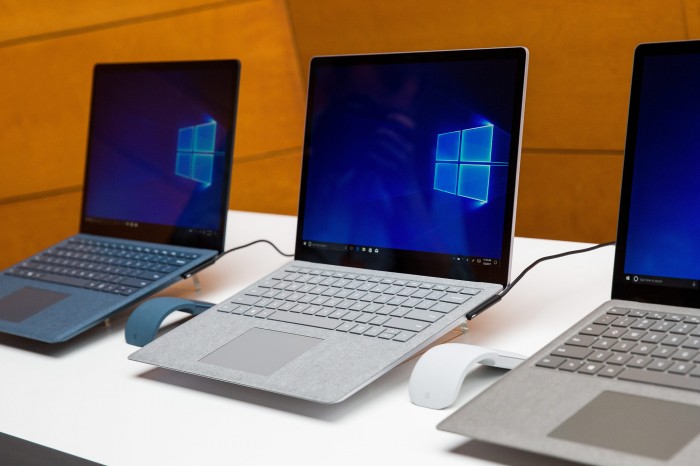Is Microsoft Innovating Its Way to Customer Alienation?

Is it possible to get too far ahead of the pack?
Earlier this week, Microsoft launched its new Surface Laptop. It’s a premium device aimed at college kids: stylish in its own way, well-specced, running a new education version of Windows, and costing $1,000. It’s squarely aimed at eating part of Apple’s Macbook Air lunch.
It’s also Microsoft’s most humdrum hardware announcement in recent time. Over the past few years, it’s unveiled the Surface Book, which brimmed with design details; an elegant convertable all-in-one PC called Surface Studio; and perhaps its biggest taste of the future, the augmented reality headset HoloLens.
As a result of that burst of innovation—and Apple's relative stagnation—we argued last year that the folks in Redmond were starting to look increasingly likely to seize the innovation crown that has for so long been worn by the maker of the iPhone. These days, it turns out that Microsoft is serious about churning out new and futuristic products—but it may be taking things a little too far for its own good.
Bloomberg took the launch of the new Surface Laptop as an opportunity to quiz Microsoft’s senior team about the firm’s innovation strategy. The article is worth reading: it outlines the company's relatively recent embrace of hardware, and describes a company learning fast, making daring decisions, and moving on quickly when things go wrong.
And yet there’s a telling pair of quotes toward the end of the piece that suggest that the firm’s recent breathless quest to innovate isn’t so much a rush to assert authority as a course it is committed to, regardless of consumer demand. Microsoft’s hardware marketing chief, Yusuf Mehdi, says: “We’re not going to come out with another device that someone’s done.” He’s quickly followed up by Alex Kipman, inventor of the HoloLens, who explains that: “The phone is already dead. People just haven’t realized.” Presumably the Surface Laptop, then, is simply a money-spinning aberration that we can expect to give way to, say, AR spectacles and wireless earbuds that augment every inch of our sight and vision.
Now, in the long run Mehdi and Kipman are probably correct. The death of the phone as we know it is likely to come about at some point—but even we at MIT Technology Review have to admit that it’s a little ways off. And there’s a very real danger here that Microsoft is trying to build and sell the future before the public is ready for it. Excepting anomalies like the iPhone, it often doesn't work out well: remember what happened when Google tried that with Project Glass?
To be certain, the current spirit of innovation in Redmond is to be celebrated, and its products may yet help define the way we use technology in the future. But as a company, all of that will only make sense if it's put to use making hardware that consumers want to buy and use right now.
(Read more: Bloomberg, “Microsoft Is Looking Like the New Apple,” “Why Apple Can’t Match the iPhone’s Success”)
Keep Reading
Most Popular
Large language models can do jaw-dropping things. But nobody knows exactly why.
And that's a problem. Figuring it out is one of the biggest scientific puzzles of our time and a crucial step towards controlling more powerful future models.
How scientists traced a mysterious covid case back to six toilets
When wastewater surveillance turns into a hunt for a single infected individual, the ethics get tricky.
The problem with plug-in hybrids? Their drivers.
Plug-in hybrids are often sold as a transition to EVs, but new data from Europe shows we’re still underestimating the emissions they produce.
Google DeepMind’s new generative model makes Super Mario–like games from scratch
Genie learns how to control games by watching hours and hours of video. It could help train next-gen robots too.
Stay connected
Get the latest updates from
MIT Technology Review
Discover special offers, top stories, upcoming events, and more.